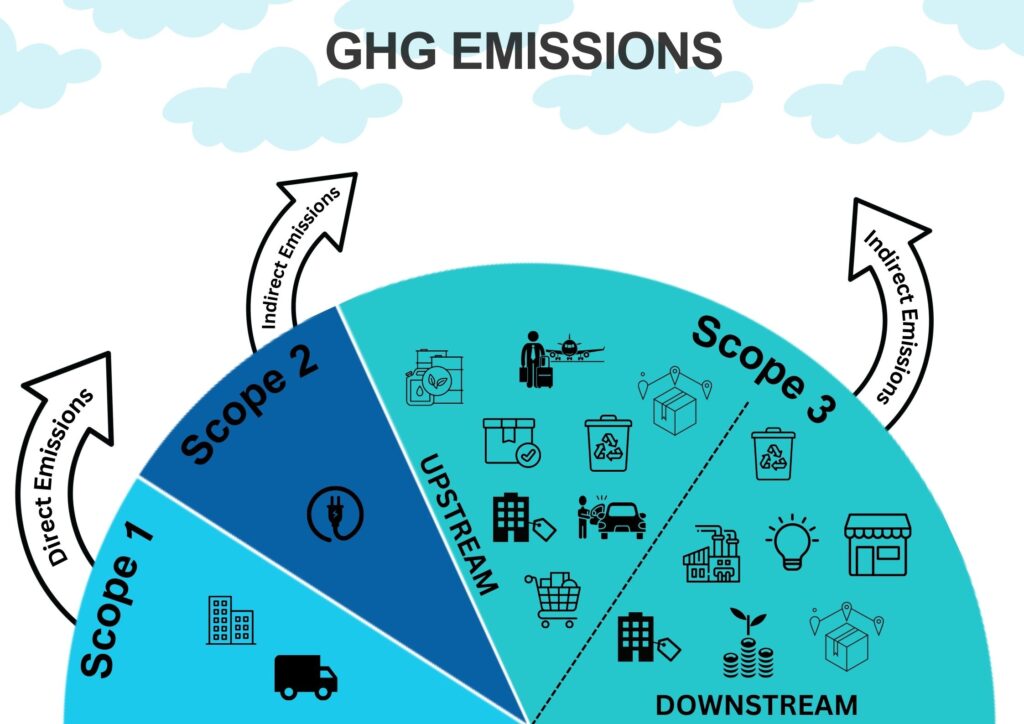
Guidance
1. Steps for setting reduction targets and tracking changes
- Step 1: Complete and report a base inventory
- The company needs to create a starting list (base inventory) of the environmental impact of its product.
- This list must follow specific rules (requirements of the standard).
- This doesn’t have to be the first list ever; the company can improve it later.
- Step 2: Identify reduction opportunities
- While making the base list, the company should look for chances to make its product less harmful to the environment.
- This includes finding opportunities during the product’s entire life cycle, from creation to use and disposal.
- Step 3: Set a reduction target
- The company should decide on goals for reducing the environmental impact of its product.
- These goals need to be clear, like saying “we want to reduce emissions by 20%”.
- Ambitious goals tend to encourage more innovation.
- Step 4: Achieve and account for reductions
- The company should find ways to meet these goals, which might include making the product differently or working with suppliers and customers.
- They need to measure and record these improvements using specific methods mentioned in the rules.
- Step 5: Recalculate the base inventory
- Over time, things might change, like how the company measures its impact or better data becoming available.
- When these changes are big enough, the company should recalculate its starting list to keep everything comparable.
- Step 6: Update the inventory report
- Once the company has made improvements and recalculated its starting list, it needs to update its report.
- This updated report should include both the original list and the changes, meeting the rules for reporting.
Additional Information:
- The company must explain any increase in emissions if that happens and outline plans to reduce it in the future.
- The report should also include a percentage showing how much the company has reduced its environmental impact.

2. Using offsets to achieve reduction targets
- Reduction Targets and Emission Sources:
- Companies set goals to reduce their environmental impact (emissions).
- Ideally, they should achieve these goals by making improvements within their own operations, like using cleaner energy or more efficient processes.
- Use of Offsets:
- If a company can’t meet its reduction goals just by making changes within its operations, it can use offsets.
- Offsets are like environmental credits earned from projects outside the company’s direct operations that reduce emissions.
- Reporting Offsets:
- Any offsets that a company buys, sells, or saves must be reported separately from the improvements made within its operations.
- This ensures transparency in reporting and helps show the real impact of the company’s products.
- Buying Offsets for All Products:
- If a company decides to buy offsets to meet its reduction goals, it should do this for all the products it sells in a specific time frame, like a year.
- This means, if a company sells a million products a year and needs to buy offsets, it should buy enough to cover the environmental impact of all those products.
- Reporting Offset Information:
- The company needs to share detailed information about the offsets it uses, including:
- The type of project the offset comes from.
- Where the project is located and who is involved (geographical and organizational origin).
- How the amount of emissions reduced by the offset is calculated.
- Steps taken to make sure the same emission reduction isn’t counted more than once (double counting).
- Whether the offset has been certified or recognized by external programs.
- Ensuring Credible Offsets:
- It’s crucial that the offsets used to meet reduction goals follow trustworthy accounting standards.
- The company should also make sure that the reductions achieved through offsets aren’t counted multiple times, either by different companies or for different goals.


